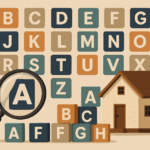
Key takeaways
Education isn’t just a lifestyle choice anymore, for many Australian families it’s a financial one.
For many Melbourne families, buying within a top public school catchment is seen as a strategic investment to avoid private school fees.
School zones are now acting like “invisible borders”, sharply influencing property prices even between neighbouring streets.
School zones are now a core economic engine, not just a lifestyle factor. They shape micro-markets, drive demand, and influence portfolio performance.
In Melbourne’s property market, the school gate is where value often begins.
It’s no secret that education for their children is a top priority for many Australian families.
But what’s becoming increasingly clear, especially here in Melbourne, is just how much that priority is translating into cold, hard property premiums.
In fact, the latest report from the Real Estate Institute of Victoria (REIV) reveals something most of us in the property space have long suspected: school zones are now acting as invisible borders of value, driving significant differences in home prices between neighbouring streets.
So let’s see what it means for buyers and sellers.
School zone as a property driver - more than just a nice-to-have
When families choose a home, proximity to high-performing public schools often isn’t just a bonus. It’s the entire reason for their purchase.

Tip: Parents are thinking long-term: "If I can secure my child a quality education without paying $30,000 a year in private school fees, it’s worth paying a little more upfront."
But “a little more” might be an understatement.
According to REIV, the premium for properties within top-performing school catchments can be eye-watering.
Take Williamstown High School, families paid a 35.1% premium, or an additional $495,000, to live within its zone.
That’s just to cross the imaginary line that defines the catchment.
And it’s not just a one-off.

Homes within the Glen Waverley Secondary College zone saw nearly a 30% markup, while buyers near Frankston High School, traditionally seen as a more affordable area, still paid 20% more than comparable homes just 1km outside the zone.
Not just houses — Apartments are getting in on the action
This trend isn’t limited to houses either.
Units in the right zones are also attracting big premiums, particularly from first-home buyers and downsizers who still want access to quality schools.
The standout?
East Doncaster Secondary College, where in-zone apartments command a 36.8% premium, amounting to a difference of $277,500 compared to apartments just 1km away.
Even in prestige markets, the effect is noticeable.
Balwyn High School, long considered one of Melbourne’s top public schools, sees units within its catchment selling for nearly $273,000 more than those outside.
The appetite is clear: people are willing to stretch, and stretch again, for access to better education.
Yes, academic performance matters. But that’s not the full story.
Interestingly, the report highlights that the schools commanding the highest property premiums aren’t always those with the top VCE rankings.
Buyers are factoring in more than just league tables, lifestyle, commute times, local amenity, and broader community feel also come into play.
That’s why Frankston High, with a median house price of just $965,000 (well below Melbourne’s average), still shows up as a value performer.
And why suburbs like East Doncaster offer a rare blend of affordability and access to highly regarded schools, a golden combo for investors and upgraders alike.
The undervalued school zones
Not all school zones are trading at a premium , yet.
In fact, some areas like Dromana Secondary College, Koonung Secondary College, and Montmorency Secondary College are showing the opposite trend: properties within the catchment are cheaper than those just outside.
For example, Dromana’s in-zone median is a staggering $390,000 lower than its surrounds.
That’s not a red flag, it’s a green light for savvy investors.
These "undervalued" zones might be where the next wave of growth is hiding, as the schools' reputations catch up with community perception and buyer demand shifts accordingly.
It’s a classic early-adopter play: get in before the herd catches on.
So what does this mean for you?
Whether you’re a homebuyer, seller, investor, or advisor, school zoning should be on your radar, and possibly even part of your due diligence checklist.
Here’s what the data tells us:
-
For buyers: Pay attention to catchment lines. That extra $200K could be justified, or you might find better value just outside a zone with a still-reputable school.
-
For sellers: If your property sits within a top catchment, make that the headline. It’s not just a feature, it’s a value multiplier.
-
For investors: Look beyond the prestige suburbs. Areas like Frankston, East Doncaster, and even Dromana present long-term capital growth potential tied to education-led demand.
Final thoughts
We talk a lot about fundamentals in property: location, infrastructure, supply and demand, but education is one of those “invisible fundamentals” quietly shaping buyer behaviour.
School zones don’t just affect where families choose to live.
They shape entire micro-markets.
So if you’re building a portfolio or advising clients, it’s time to stop thinking about schools as just lifestyle features and start recognising them as economic engines.
Because in Melbourne’s property market, the school gate isn’t just where you drop the kids off, it’s where value begins.















